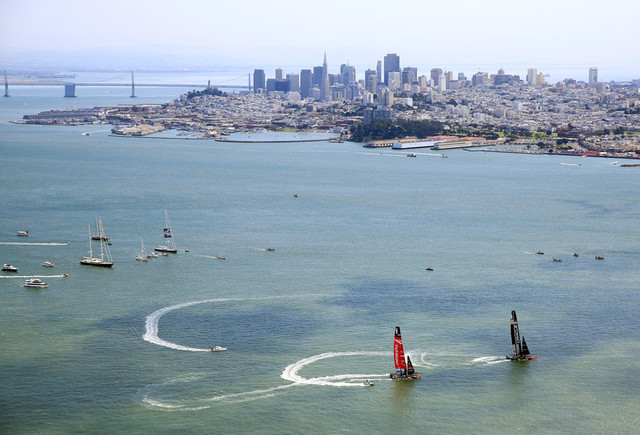
The America's Cup — remember that?
Later this month, San Francisco Mayor Ed Lee is due to submit the city's formal proposal to host the 35th America's Cup in 2016 or 2017. Right on cue, we're getting a glass half-full/half-empty debate about how much of an economic benefit the 2013 Cup delivered to the city.
The Bay Area Council Economic Institute is providing the benchmark for the discussion. The organization released an analysis of the economic activity generated by this year's America's Cup, a report that came with two scenarios:
- In scenario 1, the Cup was responsible for $550 million in economic activity and created more than 3,800 jobs. The crucial footnote: those estimates count the impact of redeveloping Pier 27, part of the main spectator venue for the Cup that will now serve as the city's cruise-ship terminal.
- Scenario 2 excludes the cruise-ship terminal from consideration and finds overall economic impact was $364 million in economic activity 2,900 jobs were created.
Those findings, which included $280 million in spending by the four teams that eventually competed in the Cup and its preliminaries, prompted Sean Randolph, the president of the economic institute, to enthuse in a press release:
“The $550 million in economic activity generated by the America’s Cup is substantial. The activity benefited hundreds of small businesses and other employers in San Francisco and the Bay Area and produced tax revenue that supports a wide range of important city services.”